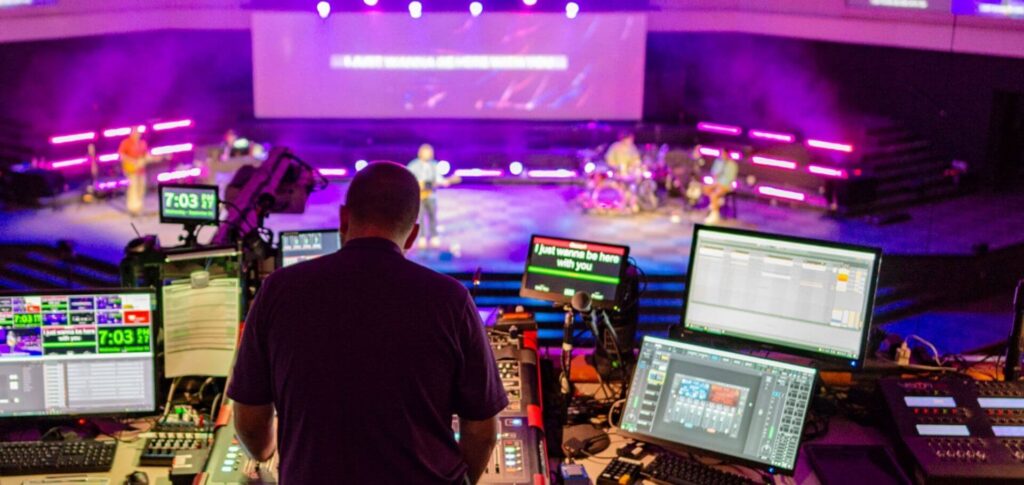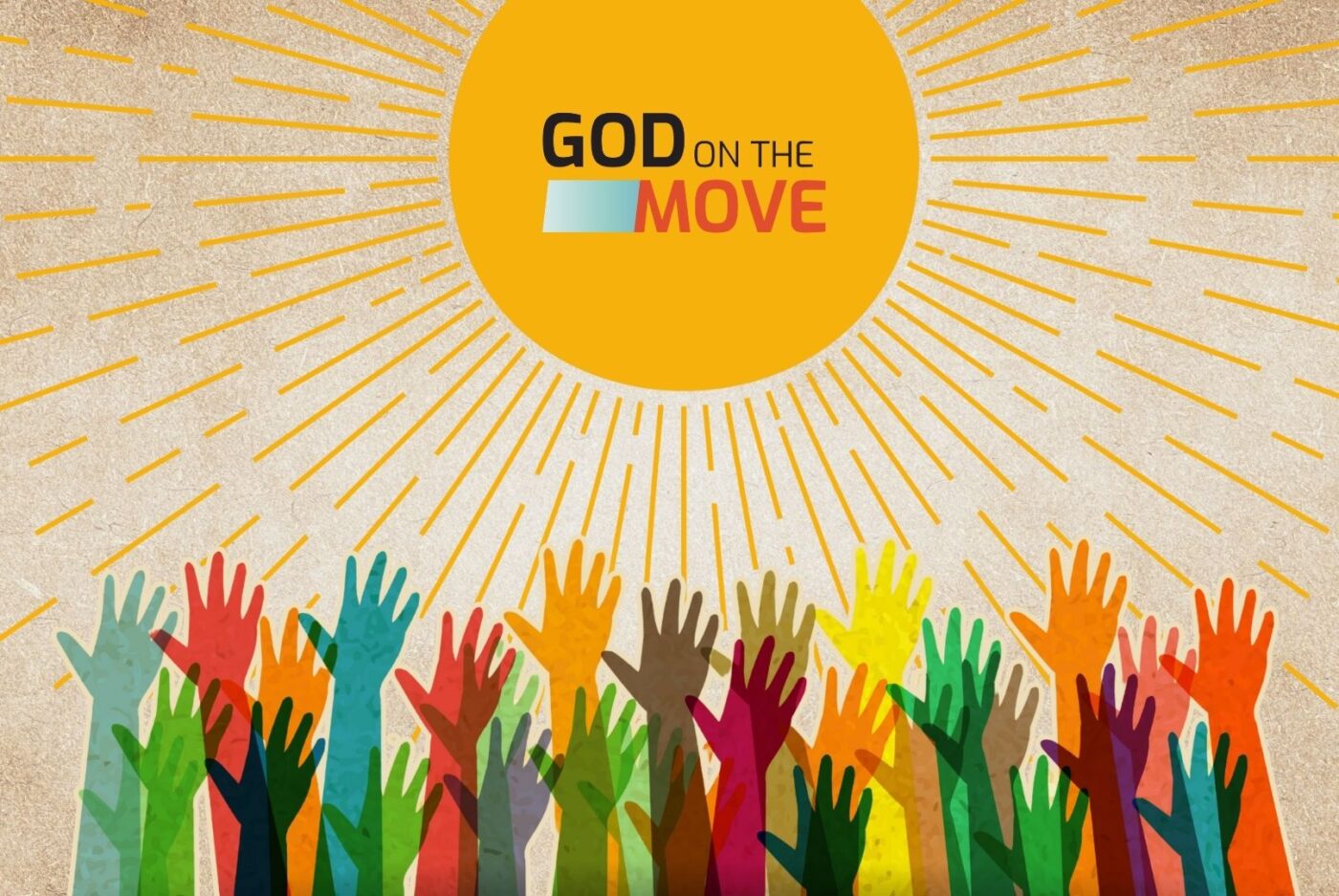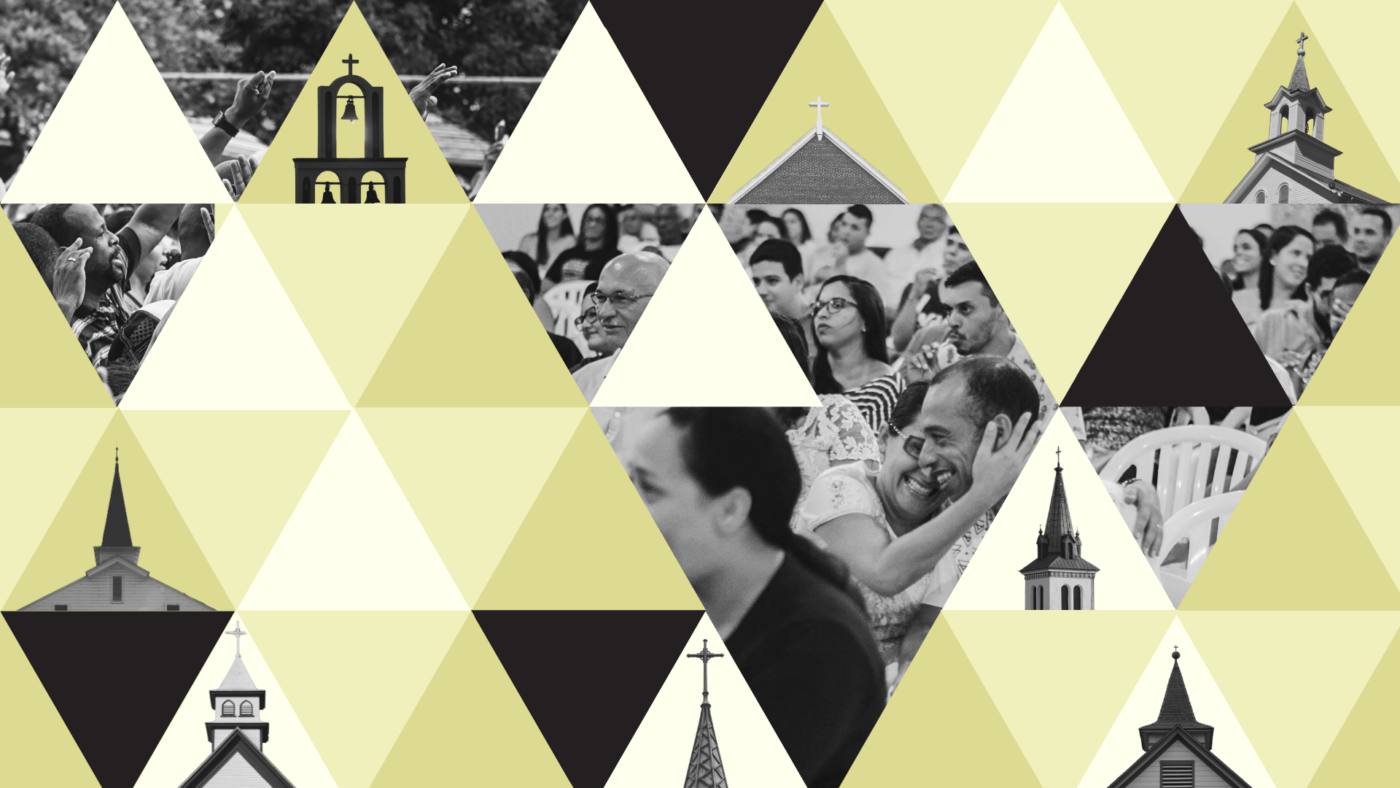Church Forms in a Digital Age
Imagine it was 1974 and the first Lausanne gathering and someone asked what technology would be like in 2023. Who could even have entertained where we are now? Technology changes so fast, tying us together over distance and time, and making us all much more aware of each other. Who could possibly predict where we will be in 2050?
A compelling argument can be made that human creativity and the drive to make things derives from the imago Dei.
The Lausanne State of the Great Commission series of articles includes a number of articles on ministry in a digital age. Our contribution is an article on ecclesiology, and includes reflections on the issues that need consideration concerning churches’ use of digital technology in gathering for worship and fellowship. These reflections are also meant to be forward looking, preparing the church for a possible future world in the coming decades. This is a challenging task, not only because it is difficult to foretell which innovations will be realized, but also because it is difficult to predict the socio-political impact of the use and user adaptation of such technologies. What we can do is to exemplify the kind of theological reflection that is necessary by exploring issues concerning current forms of digital church and making some tentative suggestions. Therefore, we are left with thinking through the challenges, strengths, and limitations we need to consider about digital use in general, as we move forward with the hope of the gospel and the grounding of new generations in the church.

Basic Presuppositions about Technology
At the outset it is worth highlighting a few basic presuppositions. First, an essentially positive affirmation of technology can be drawn from the Christian doctrine of creation. A compelling argument can be made that human creativity and the drive to make things derives from the imago Dei. That is, there is something innate about our making that reflects the nature of the creator God. If technology is (partly) tools that extend human capacities, then God’s invitation to Adam to name the animals (Gen 2:19) can be seen as an early act of human co-creation and technological innovation (language). This is not to suggest that technology plays a wholly positive role in biblical narratives. Even in the earlier parts of Genesis we see an ambiguity worked out. On the one hand, human-created technology in the form of an ark becomes the conduit of God’s salvation during a chasmic flood, and on the other hand, a tower becomes a symbol of human hubris and greed.
Second, however, we cannot simply view technology in utilitarian terms, as tools that can be used to different ends. Through technology we remake and recreate the world resulting in new human cultures and environments. Therefore, when we come to a gathering for worship, technology shapes the practice and influences our experience thereof in often subtle ways. For example, in some Protestant traditions there has been a drive towards ‘simplifying’ worship and to such ends removing any visuals or objects that are seen as distracting from true worship. However, whether we worship in a bare-walled warehouse or an ornamented cathedral, the environments of these two technologies have an impact on worshippers’ experience of worship, although different ones. Their different symbolisms communicate and reinforce different values and theologies. This then raises questions about what kinds of liturgical spaces are created when we worship on digital platforms.
Types of Digital Church
To stay faithful to its nature and tasks, it is important that the church grapples with the implications of digital adaptation and reflects on some of the ecclesiological issues at stake. A helpful analytical framework in this regard is John Dyer’s five fold typology of digital church. It emphasizes, firstly, that digital communication technology comprises a variety of platforms and their usage and impact differ. Secondly, it emphasizes that how churches negotiate these is linked to their tradition and ecclesiological outlook. Five types of digital church are explained:
- Online church refers to the ways in which many churches have websites, emails, social media channels, and admin software to effectively communicate and organize.
- Broadcast church follows a TV-broadcasting logic by which services are broadcasted on digital platforms but there are limited possibilities of engaging.
- Interactive church, in contradistinction, may use video-conferencing for services but actively encourages interaction with and between participants.
- Hybrid church refers to practices whereby participants are welcome to join services onsite or online through live streaming.
- VR-church is when worshippers join live sessions in immersive digital spaces and typically interact through avatars.
It is naturally possible that a given church falls within several of these types. Many local churches have a social media presence or use email to communicate, and might live stream their services. Further, online and offline modes of gathering and community building are increasingly interconnected. More often than not, digital technology is used to supplement and further the practices of local churches. For instance, digital communication is regularly used to communicate and organize in-person events. Or many churches might emphasize an in-person gathering for a weekly service while using digital technology to connect during the week. WhatsApp groups provide means to mobilize prayer and Zoom becomes a means for regular small group fellowship for those with a busy work or family life.

Factors that Influence Technological Adaptation
Each of these types of digital church embodies different ecclesiologies. Churches which are more hierarchical in structure have tended to adopt a broadcasting logic when streaming services. The lens of the camera in such services focuses on the priest who is seen as a mediator of God’s presence to the people. Some churches which are more sacramental might typify online church but, because of the emphasis placed on physical location in worship, are reluctant to stream services online. Evangelical churches with a more ‘low church’ ecclesiology tend to use the technology to invite participation and, therefore, have sought to implement interactive church. Most evangelical churches would argue that believers gathered in Jesus’ name constitute the essence of church. Community building when gathering is therefore essential. Yet, for many, VR-church seems to be a step too far. To date, churches in VR-environments remain a marginal phenomenon. Proponents of VR-church tend to emphasize the missional opportunities and the possibilities of introducing the gospel to those who would normally not set their foot in on-site churches.
Practical considerations naturally also come into play. As the churches came out of the COVID-19 pandemic, many morphed into hybrid church, attempting to cater to those who were not able to join on-site worship. Others, after the exhaustion from the stresses of the pandemic, dropped streaming altogether as the burden became too great. Further factors that come into play are the demographics of the congregation. The level of resources and know-how will have implications for how local churches adopt digital technology. This means that conversations about churches’ use of digital technology requires both theological and practical wisdom.
As this discussion illustrates, churches’ adaptation of technology is dependent on a number of factors, which lead to different forms of digital church. This demands a continuous negotiation in order to best understand what digital provisions give us and where they might fall short of theological and biblical ideals.
Therefore, the remainder of this article will focus on the challenges, strengths, and limitations we need to consider about digital use in general.
Challenges
Part of the challenge is not knowing exactly where all of this goes in the next few decades. Today, there is much discussion about AI and where it could and will take us. Can it develop to a point where it becomes its own entity with a ‘mind’ of its own? Will it come with an imprimatur of science and technology over it so that anything goes, and will we be discerning about what it offers us or where it limits us? Will the facilitation of many processes leave humans asking questions about what they are to do to steward the world better (as Gen 1 asks of us when it calls us to subdue the earth in a functional manner)? For all that technology offers, even in the church, can we steward its resources wisely? Part of that judgment requires appreciating its strengths and limitations.
Another challenge relates to how this medium processes information. It is bidirectional and interactive. This means people post information but then it gets circulated in all kinds of responsive forms. Information is not circulated as a collected outline but in bits and pieces. Therefore, it is not really vetted, and information and misinformation can mix. This requires diligence on our part to understand what we should accept as genuine information versus information framed for us in ways that do not correspond to reality. The fact that information works more like bullet points pursued in any order rather than through an outline, means we think and process information differently than in a book medium. Does this impact the way we deliver, teach, and preach biblical content so that listeners who are used to processing information in one way can absorb what Scripture teaches?
A final challenge is with regard to who gets to speak. An accompanying issue to this is that of resource imbalance, which may preclude some from being able to speak whose voice needs to be heard. This means that moments of participation will need to be conscious and open to these voices. The digital world can level this field and the church universal can ‘gather’. When that happens there should be concern that all these voices have a chance to speak and are given access to share in the conversations that will result. The danger is that those who lack resources will not be heard and will be marginalized. These dynamics are likely to continue and may even be exacerbated as technologies develop that require resources in order to be utilized. Intentionality is required in this endeavour.

Strengths
A great strength of technology is the way it gives access to people and between peoples across distances and cultures. The church as a whole can consider in new ways how to reach people in remote areas instantly and how to convey the vast amounts of information we possess.
A great strength of technology is the way it gives access to people and between peoples across distances and cultures.
One challenge within the strength is that information is not only verbal but visual. This means there is the potential that the visual can be manipulated in order to make that which is false, or misleading, look true. Long gone are the days when it was a few authoritative voices who processed information for us. Now we have niches of information, a full auditorium of voices, and the possibility of the voices heard operating in a silo. How does the church handle that less centralized feature as information goes out in all directions and time zones? As Neil Postman famously remarked in his book Technopoly, technology changes everything. Much like how the Roman road system linked the Roman Empire together and allowed the gospel to spread more easily, so technology opens up a different kind of mental road system. But because technology comes at us in so many forms, it can be overwhelming, which requires not just adoption but also reflection. The Joshua Project estimates that by 2035 all people will have access to the internet. Most of the new users will be in places where gospel exposure has been minimal. Combined with the possibility of misinformation, how does open access need to be monitored? Can it even be monitored?
We are already seeing the impact of technology in how we do church and in how people feel about being physically gathered together. The COVID-19 pandemic accelerated this option of how to do church, as many churches now stream as they also gather. People are choosing to attend in one way or the other and occasionally mix the proportion of how they attend. The questions surrounding what is doable versus what is best remains. However, it is unrealistic to think the digital option will go away and, therefore, more discussion about best practices is needed. This includes serious consideration of how to cross cultures with content coming from one region of the world to another, as well as the sorting out of what reflects one culture to the detriment of another.
Limitations
Perhaps the core limitations within technology have already been noted. First, the flow of information is so open-ended that it is hard to know what is accurate and what is not. Second, what technology can become and what it might replace is still undetermined in many spheres. While the church has often adopted such cultural developments and pursued their expansion in ways that serve the gospel, doing this in ways that actually reflect and advance the gospel in substantive ways will require the development of many who have expertise to help us be discerning about what is taking place, what is being developed, and what those developments may mean. Innovation without such reflection could be counterproductive. Yet, ignoring innovation will leave the church behind in how to reach people when many different kinds of groups are aggressively reaching out by all means necessary to impact how people think and live.
How to work on building genuine community in the midst of such connections is another challenge that many see as a limitation. However, as technology adds depth and capability to how it works, some of these challenges can and will be minimized. The difference between a wired telephone of the past with no visual component and how visual we can be now with an iPhone to stay in touch with missionaries, ministry partners, friends, and family is obvious to all of us. It remains to be seen how such capabilities will expand. Many of us have developed friendships and connections with people and organizations where we have never physically been. Technology makes this possible and the capabilities are likely only to expand in this direction. Working at home versus in an office in another city is but a symptom of all of this. Things that seemed unlikely or impossible years ago are now becoming more common. Who knows what the future holds here?
Conclusion
Reviewing where we may be headed shows that challenges, strengths, and limitations do not function as clean boxes but interact with each other as technology develops. How those combinations develop and what the results become requires continued reflection on the principles that should guide their wise use and implementation. Some of those principles include:
- Concern for the accuracy of what comes our way by technology.
- How the medium builds community in meaningful ways.
- Awareness of the choice of medium and how each type shapes perception with its own set of strengths and weaknesses.
- How our churches and organizations end up reaching people who otherwise might be neglected.
- How we remain sensitive to cross-cultural dynamics, discerning which voices get to speak into our efforts so we reflect contributions from the whole of the church.
Perhaps the biggest challenge is simply being able to keep up with how digital provision comes in such an open-ended way and at such a fast pace. This means Information Technology people may need to not only be digital technicians, but also people who grapple with the medium itself. Pastors and church leaders will also need awareness of these issues as decisions are made both locally and denominationally. Attention also must be given to which sites give us the best and worst kind of information. Finally, all of us require some level of digital awareness so that the strengths of the medium can be applied while its limitations are also addressed.








